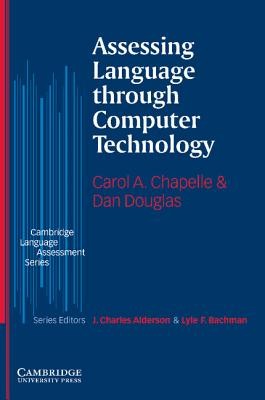
- We will send in 10–14 business days.
- Author: Carol a Chapelle
- Publisher: Cambridge University Press
- ISBN-10: 0521549493
- ISBN-13: 9780521549493
- Format: 14.7 x 23.3 x 0.9 cm, softcover
- Language: English
- SAVE -10% with code: EXTRA
Reviews
Description
In 1998 and 1999, three of the largest providers of educational tests introduced computer-based versions of proficiency tests for English as a foreign language. Around the same time, many institutions began to offer Web-based tests for particular language courses and classes. These two phenomena have greatly added to the momentum of work in computer-assisted testing and mean that assessment through computer technology is becoming a fact for language learners in educational settings and therefore for teachers and researchers. This book is the first to consider the theoretical, methodological and practical issues and their implications for language-teaching professionals wishing to engage with computer-assisted assessment. It overviews the work in the field, evaluates examples of assessment though computer technology, and provides language teachers and researchers with practical guidelines for implementation.
EXTRA 10 % discount with code: EXTRA
The promotion ends in 16d.21:14:28
The discount code is valid when purchasing from 10 €. Discounts do not stack.
- Author: Carol a Chapelle
- Publisher: Cambridge University Press
- ISBN-10: 0521549493
- ISBN-13: 9780521549493
- Format: 14.7 x 23.3 x 0.9 cm, softcover
- Language: English English
In 1998 and 1999, three of the largest providers of educational tests introduced computer-based versions of proficiency tests for English as a foreign language. Around the same time, many institutions began to offer Web-based tests for particular language courses and classes. These two phenomena have greatly added to the momentum of work in computer-assisted testing and mean that assessment through computer technology is becoming a fact for language learners in educational settings and therefore for teachers and researchers. This book is the first to consider the theoretical, methodological and practical issues and their implications for language-teaching professionals wishing to engage with computer-assisted assessment. It overviews the work in the field, evaluates examples of assessment though computer technology, and provides language teachers and researchers with practical guidelines for implementation.


Reviews